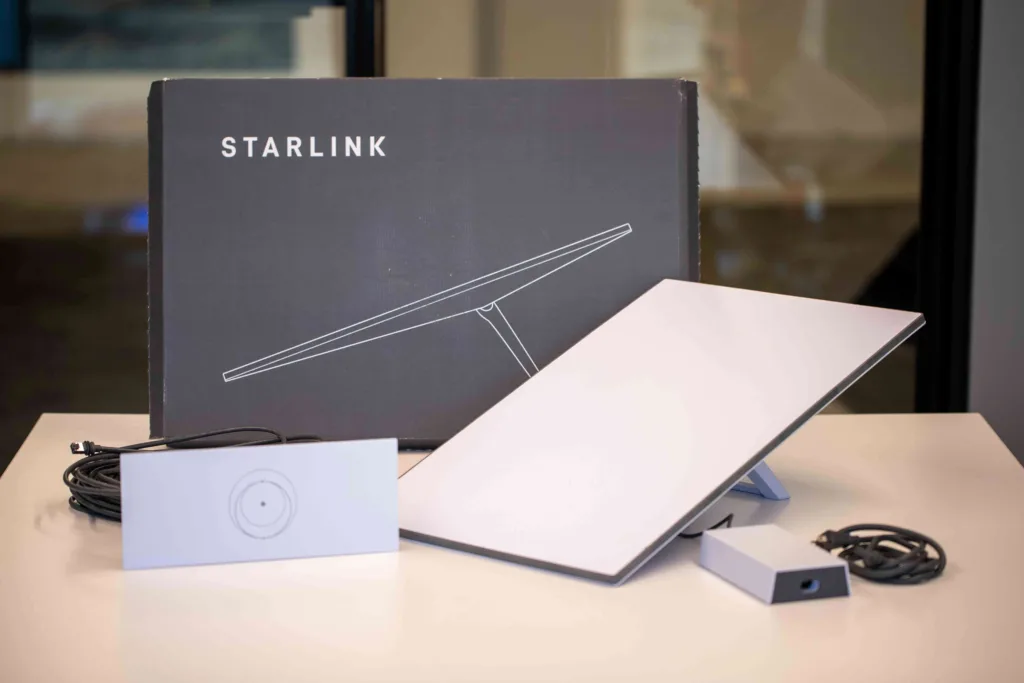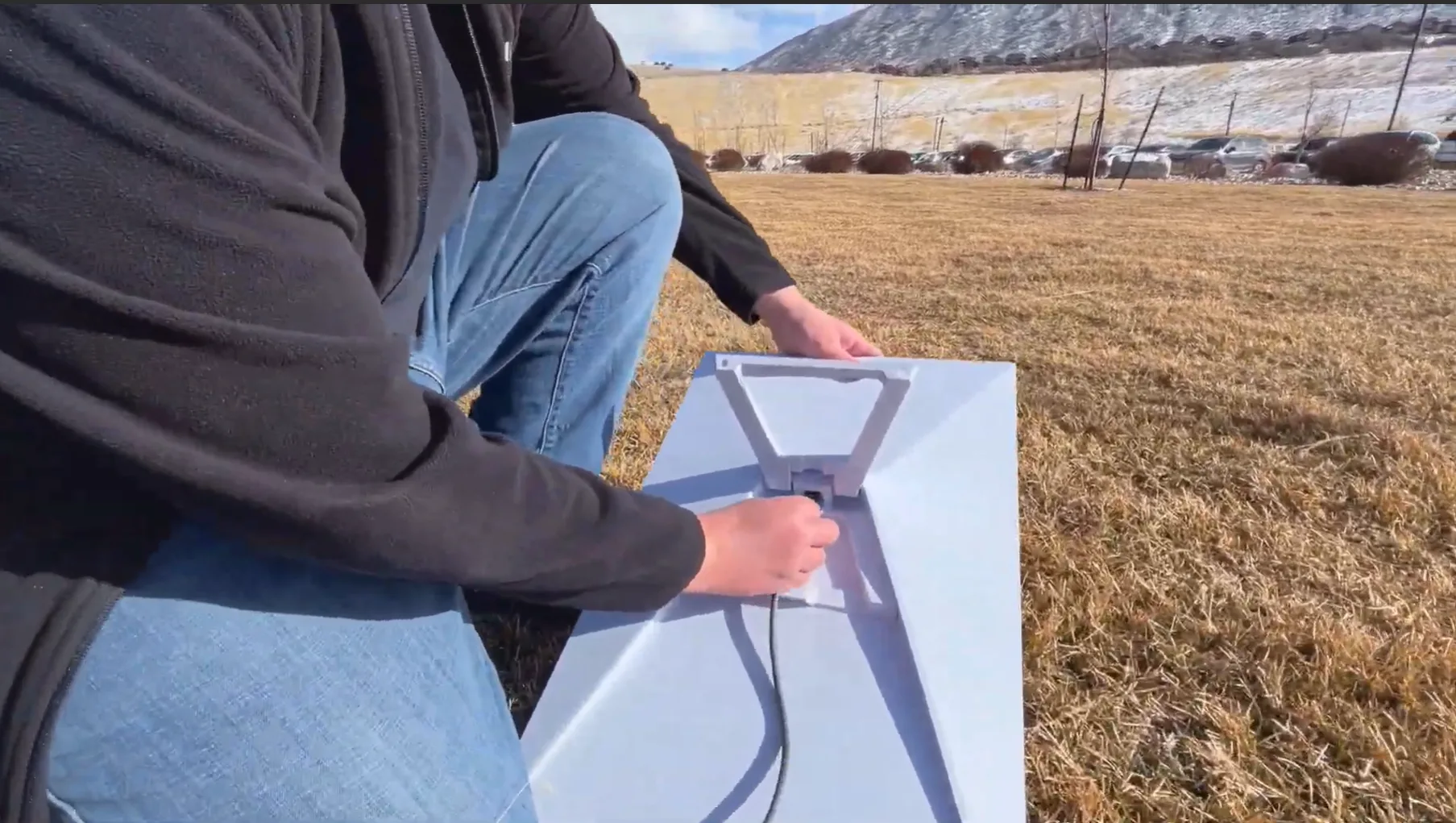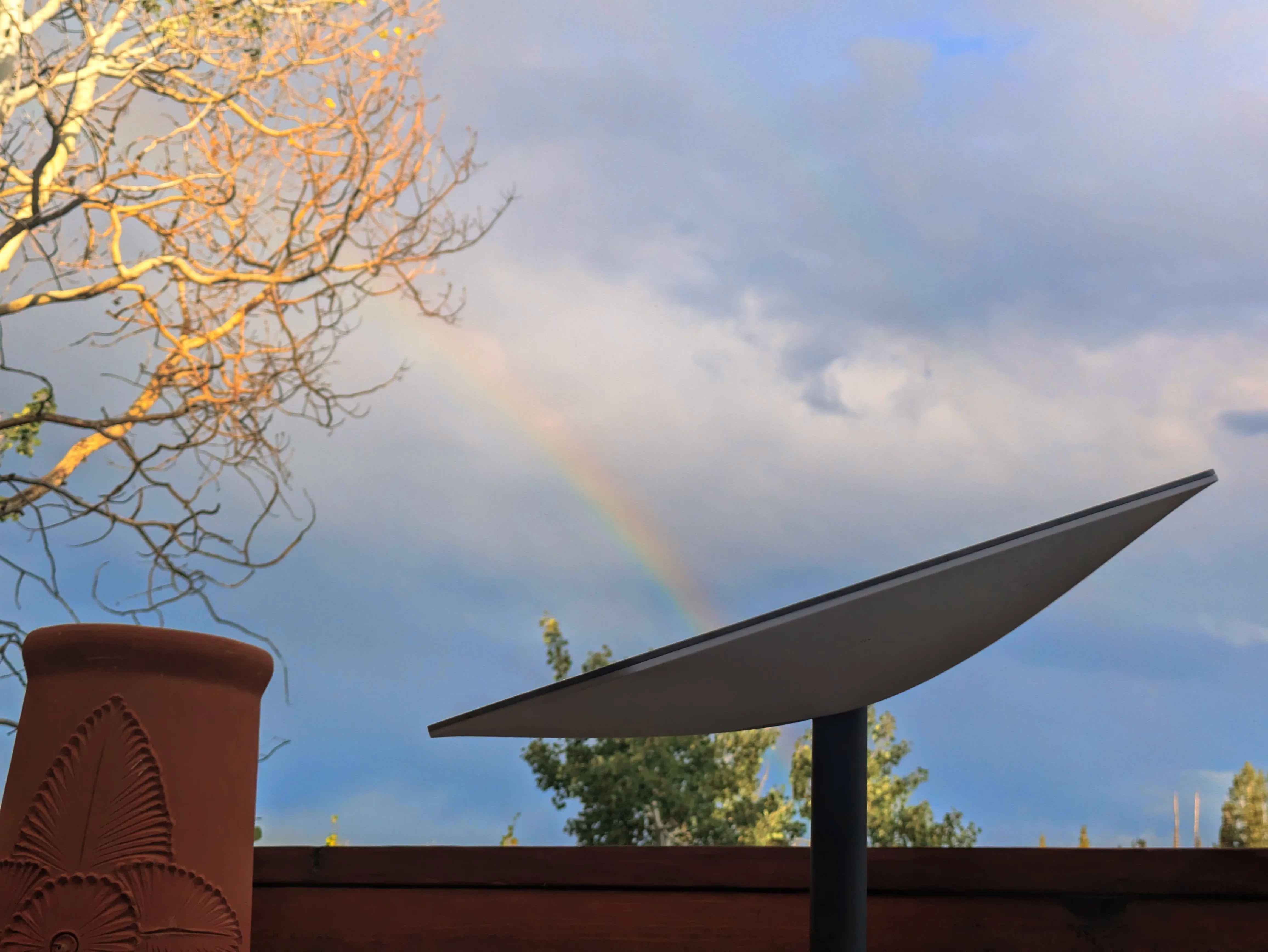SpaceX’s Starlink is a powerful internet solution bringing high-speed, low-latency broadband to rural areas where fiber or wireless internet isn’t available. Starlink promises customers a lot, and I found that it comes through with most of those promises. It’s easy to get started and provides reliable service, but it has high start-up costs and monthly subscription fees that can be barriers for some customers.
Starlink Internet Review: A Huge Leap Forward for a High Price Tag
Starlink engineered its system to be intuitive, but the self-installation and limited customer support may also put off some users who are used to those services. Dedicated customer service is sparse, with DIY installation, and the only way to connect with support is through tickets on the website or phone app.
How I wrote this Starlink review
Hi, I’m Andreas Rivera, a technology writer with a nearly decade-long career reviewing products and services. I tested Starlink with a Standard dish throughout 2024 and 2025 at my family cabin in rural Utah, located in a mountainous and forested area. I also communicated with more than a dozen different customers in various parts of the world to find out how Starlink meets its customers’ needs. I also drew from proprietary data on speeds and pricing, and research into the satellite internet industry and the technology that drives it.
This review primarily focuses on Starlink's fixed, residential internet service. For Starlink's Mobile internet service, read the review here.

The Standard Starlink kit comes with all the equipment you need to get online fast. The only thing you need is a smartphone with the Starlink app. | Photo by Allaina Jefferies for SatelliteInternet.com
I recommend Starlink Priority if you want guaranteed top speeds or own a business. It comes in three priority data plans that unlock even faster download speeds.
Starlink Roam is ideal for RVs, campers, and other nomads. You can take your dish and get online anywhere around the globe where Starlink is authorized, even while moving. If you're making a long trip in your RV, your passengers can enjoy streaming a movie. There’s also an affordable 50GB Roam option for temporary use.
Starlink Mobile Priority is the most expensive plan, and I recommend it for ocean use, mobile businesses, and emergency responders. It’s best paired with the Flat High-Performance dish for maximum bandwidth and signal.
How we rate and compare satellite internet providers
Speed
Takes into account the provider’s download/upload speeds and average latency.Reliability
Rates the consistency of service and access to customer support.Data
Rates the allotment of high-speed data in a provider’s plans, taking into account priority data and options for purchasing more data.Value
Rates the pricing (including fees, discounts and special offers) of services for what you’re getting and compared to competitors.
To keep a fair comparison, we rate satellite internet providers only against other satellite internet competitors.
Speed and latency
4.7 out of 5
I found that Starlink’s download speed will depend on the location, time of day, and the changing state of the satellite constellation. I ran multiple speed tests during my time with Starlink and consistently got download speeds between 100Mbps and 200Mbps, which is consistent with the speeds customers reported in interviews. Although on occasion, I’d get download speeds that far surpassed 220Mbps. My latency was also very low, usually around 20ms.
While Starlink will give you download speeds that are the same or faster than Hughesnet and Viasat, the stark difference in latency is where it shines. Starlink’s satellites orbit closer to the Earth’s surface to provide more robust and faster connections with lower latency than Viasat or Hughesnet’s geostationary satellites.
Around the U.S., Starlink latency runs between 30 and 40 milliseconds (ms), compared to Hughesnet and Viasat, which clock in latency as high as 800ms. The improved latency makes Starlink ideal for buffer-free streaming and online gaming—activities that are frustrating or nonexistent for Hughesnet and Viasat customers.

A shot of Starlink satellites before being deployed above Earth. Starlink's satellites are among the closest orbiting satellites, which accounts for the service's low latency. | Image by SpaceX
Starlink is easily the best choice for gaming over satellite internet.
Latency can make or break your multiplayer gaming experience, especially in games that require fast reactions, such as first-person shooters, racers, and fighting games. Satellite internet notoriously has high latency, making most online gaming nearly impossible. You can’t be competitive, and many games won’t even let you connect with such high ping.
Starlink solves the high latency problem with its LEO satellite technology, allowing for more responsive internet. Gamers who use Starlink say they can finally get online to play with friends. I was able to play online games like Mario Kart and Fortnite over Starlink as if I were playing them over my traditional home internet connection—no delays or disconnections.
Reliability
3.5 out of 5
Starlink’s reliability rating is among the lowest of any provider due mainly to its poor customer support. Limited support is a significant source of customer dissatisfaction.
Submitting a support ticket through your user account is the primary way to get questions answered directly by Starlink. Customers remarked that this method's response time was slow, which is concerning since satellite internet is some people’s only line of communication.
When I submitted hypothetical issues and questions to the support site, it was obvious that I was chatting with a bot. It would simply direct me to an article on its help site and wouldn’t even give me the option to submit a ticket until I clicked “No” multiple times when asked if it was helpful.
Many customers I interviewed rarely needed customer service and actually liked the hands-off approach. Even if this is so, it’s no excuse for not having more responsive support for something many people depend on.
The reliability of Starlink’s signal has proven to be steady, with hardly any significant outages. However, it fluctuates as more people sign up and SpaceX launches more satellites to accommodate the growth. I live in an area with plenty of bandwidth, so I have never experienced slowdowns, but people in heavy usage areas have noticed speeds going down. Starlink occasionally charges a congestion fee for new customers in specific regions or pauses sales altogether.

Starlink is completely self-installed. It can easily be set up anywhere there is a clear view of the sky. There are also accessories used to permanently mount the dish to your home or vehicle. | Image by Kayla Fischer for SatelliteInternet.com
Starlink is engineered to work directly out of the box. I set up my own Starlink and got online in about 30 minutes, just outside my home. Permanent installation will require more effort. Many customers I spoke with were handy enough to mount their dish, drill a hole in their home, and run the cable through, but they also told me they understood it could be troublesome for others.
The proprietary mounting attachments and cables are available only from Starlink and a handful of retailers. Customers I interviewed told me that once they had the equipment, it was only an afternoon’s work.
If you can’t or are unwilling to self-install, you can hire third-party services, though this is expensive. For example, Best Buy charges $230 for Starlink installation.
Data
4.5 out of 5
Starlink markets its plans as having unlimited high-speed data, and while this is technically true, there is some fine print to be aware of. Service providers have only so much bandwidth to offer their customers; Starlink is no exception.
Starlink’s Fair Use Policy states that to deliver fair and equal speeds to all customers, it may slow speeds for customers who consistently surpass the average usage amount.
Unlike other providers, the policy doesn’t specify the amount of data. For example, Viasat identifies normal usage as 850GB per month. However, Starlink customers I’ve spoken to say they’ve rarely experienced slowdowns or outages, if at all.
Starlink’s business-focused Priority plans are not unlimited and are priced at different data tiers. Additionally, you can purchase more high-speed data if you exceed your plan’s allotment.
Value
3.5 out of 5
I recommend the Residential plan for home use, priced at $120 per month. It compares favorably to the most expensive plans from Hughesnet and Viasat, offering significantly better speeds and unlimited data. Most customers I spoke with had the Residential plan, and the speeds were more than sufficient, even for those running businesses, working from home, and having multiple household members using the internet.
Everyone I spoke with said that despite the cost of equipment and expensive monthly service plan, they thought it was worth it. For most, satellite internet was their only option, and they found that Starlink was far more reliable than Hughesnet and Viasat, DSL options, or fixed-wireless providers.
Starlink is easily the most expensive service provider, considering the upfront cost of purchasing the equipment and the price of its service plans. I give credit that in 2024, Starlink lowered the regular price of its Standard dish twice. It also regularly puts the dish on sale in regions where there’s excess bandwidth. The lowest price in certain areas was $149, the cheapest it's ever been.
Starlink doesn’t require a contract, leaving Hughesnet as the only satellite internet provider that requires a two-year commitment.
Fortunately, if you leave the service, you can sell and transfer ownership of Starlink kits to others. Likewise, you can save money by buying a pre-owned kit, but like any used electronics, it may not work correctly.

Starlink is perfect for residences in rural, mountainous, and forested areas, which traditional broadband cannot reach. | Photo by Andreas Rivera for SatelliteInternet.com

Starlink's provider rating overall
Most Starlink customers I interviewed switched their internet service from one of the other two satellite internet providers. Although they disliked its high entry cost and hands-off approach to customer service, they were happy to switch to the new service and haven’t looked back.
Despite these differences, customers have been satisfied with Starlink overall and say the costs are worth it to no longer have laggy internet and overcomplicated internet packages and pricing. Due to their technological differences, Hughesnet and Viasat can only do so much regarding speed. Instead, they try to remain competitive by making their services more affordable and improving reliability.
Hughesnet and Viasat are viable alternatives that will save you money when using the internet for fundamental tasks like browsing, communication, and lower-quality streaming. However, Starlink is the satellite internet provider closest to emulating a traditional broadband service.
Starlink Roam: High-speed internet on the go
Starlink Roam plans let you go online from nearly anywhere, depending on the plan. It’s for RV owners, campers, and nomads who need reliable, high-speed internet on their travels. With Roam Unlimited, you can connect anywhere globally where Starlink is authorized to operate. Starlink also offers a cheaper 50GB Roam plan for short-term travel. Its data allotment limits it, but you can purchase more for $1 per gigabyte.
Roam is compatible with any current Starlink kit and can be used in motion. A Mobile Priority plan paired with the Flat High-Performance dish allows you to tap into Starlink’s highest speeds while in motion, making it the preferred choice for maritime or mobile business usage.
How do the Roam plans compare to the fixed-location plans? While it allows you to set up your dish at the campground, its bandwidth is prioritized less than residential so you can expect lower speeds and higher latency. Starlink lists the speed of its Roam plans as 30–100Mbps, with latency no higher than 99ms. The actual speeds you’ll get will vary depending on weather conditions and how busy the network is in your area.

The Starlink Mini is small enough to carry in your backpack and can easily be powered with a mobile power source. | Photo by Katie McEntire for SatelliteInternet.com
Starlink Mini: A dish that fits in your backpack
The Starlink Mini is half the size and weight of the standard dish and includes built-in Wi-Fi, so you don’t need a separate router or gateway device. Perfect for backpacking excursions or if you’re trying to save space in your RV. It also has an exclusive Roam plan that’s only $50 per month and can be used in motion. The main drawback is that the plan is limited to 50GB of data per month—after the data is used up, you will have to purchase more at a rate of $1 per GB.
How do Starlink's ratings compare to satellite internet competitors?
Starlink receives the top average rating out of all categories compared to the other two major satellite internet providers. It gets high marks for its speed and data. Reliability also receives an excellent rating for its intuitiveness and recent improvements to its customer service. Value is also above average but is stifled by its expensive upfront equipment costs and monthly plans.
How do Starlink’s price, speed, and data compare to satellite internet rivals?
Starlink is, without a doubt, the most expensive satellite internet service, including the upfront equipment cost. However, some users have found ways to balance the expenses with Starlink.
For example, users of a service with a data cap would supplement their internet with a satellite TV provider since streaming would quickly use their priority data. With unlimited data from Starlink, they could cancel their satellite TV and stream all they wanted.
While “unlimited data” rarely means unlimited, high-speed internet, Starlink customers said they haven’t experienced significant slowdowns, even when their monthly usage reaches terabytes. Meanwhile, users of Hughesnet and Viasat (when they had data caps) have told me they would sometimes run through their monthly data allotments in a week and be forced to either buy more data or deal with sluggish speeds.
What Starlink customers told me about their experience
Jim Olson uses Starlink at his self-sustaining cabin in mountainous Colorado. He told me the quality was night and day after using the other two satellite providers (Hughesnet and Viasat).
“The second we turned it on, we went from 20Mbps down to about 150Mbps down,” Olson says. “Latency was the biggest surprise. 40ms, which was enough to stream live TV. That was not an option before.”
Zachary Shepherd lives in rural Utah and has been a Starlink customer since its beta era in 2020.
“They’ve been awesome since the beginning. Hardly any downtime,” Shepherd said. “For the uptime alone, I’d say it’s worth it. Unless it’s a major storm, then sometimes it’s a little sluggish.”
Jason Astel was previously a Viasat customer in rural Missouri. He told me he was frustrated by the service and jumped on Starlink when he learned of its potential. He was primarily sick of latency issues and data caps that made streaming and gaming nearly impossible.
“With Starlink, I'm able to do everything I need: Online gaming and video conferencing,” Astel said. “We eliminated DirecTV, and we use YouTube TV now. We are much happier with Starlink. We saved money by changing to it.”
Starlink’s unlimited data means he can stream and game as much as he wants and could save money by cutting the cord (in this case, the dish).
Eduardo Dias is a Starlink customer living in Germany. Previously, his best option for internet where he lived was 4G wireless with speeds up to 5Mbps. After being on a waitlist, he finally got Starlink and was pleasantly surprised.
“Fantastic speeds I got ranged from 150Mbps to 300Mbps,” Dias said. “Rarely had service issues. I was surprised by the latency because from my initial research into satellite internet, it showed it has terrible latency. I get an average of 50 to 70 ping in gaming.”
While it’s been a great experience, Dias mentioned it’s still not perfect.
“The upload speeds I get are around 15Mbps on average, but these days, to send files or stream on Discord for friends, that's really not enough,” he says.
Need more information?
For more information and facts about Starlink, read our complete FAQ and guide to customer service.












